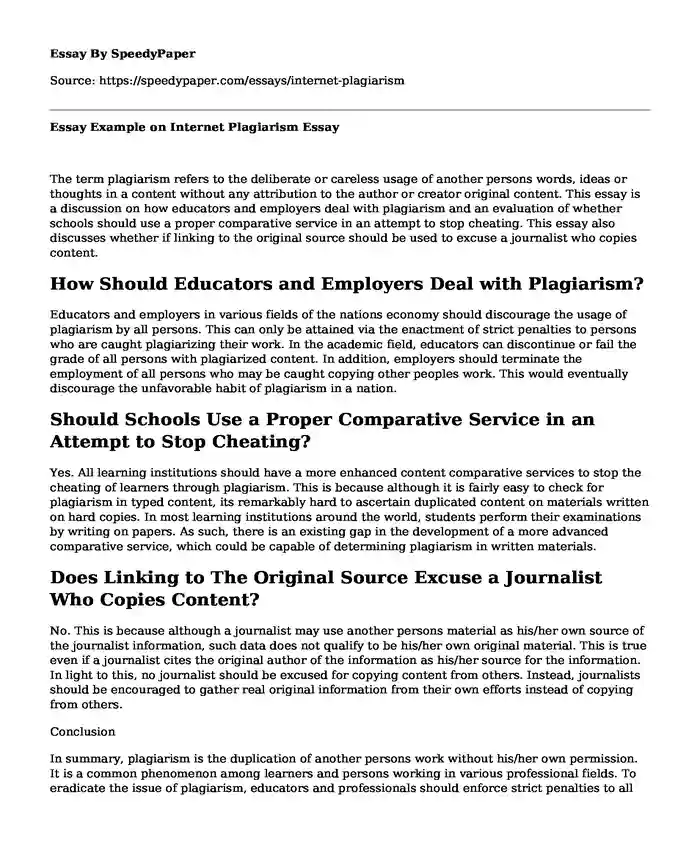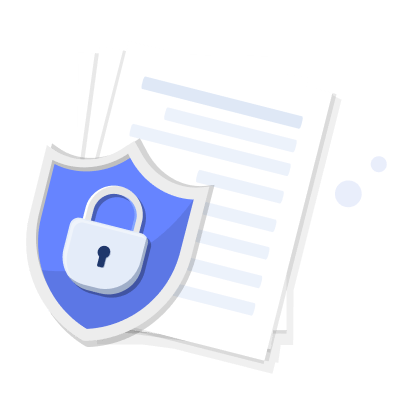The term plagiarism refers to the deliberate or careless usage of another persons words, ideas or thoughts in a content without any attribution to the author or creator original content. This essay is a discussion on how educators and employers deal with plagiarism and an evaluation of whether schools should use a proper comparative service in an attempt to stop cheating. This essay also discusses whether if linking to the original source should be used to excuse a journalist who copies content.
How Should Educators and Employers Deal with Plagiarism?
Educators and employers in various fields of the nations economy should discourage the usage of plagiarism by all persons. This can only be attained via the enactment of strict penalties to persons who are caught plagiarizing their work. In the academic field, educators can discontinue or fail the grade of all persons with plagiarized content. In addition, employers should terminate the employment of all persons who may be caught copying other peoples work. This would eventually discourage the unfavorable habit of plagiarism in a nation.
Should Schools Use a Proper Comparative Service in an Attempt to Stop Cheating?
Yes. All learning institutions should have a more enhanced content comparative services to stop the cheating of learners through plagiarism. This is because although it is fairly easy to check for plagiarism in typed content, its remarkably hard to ascertain duplicated content on materials written on hard copies. In most learning institutions around the world, students perform their examinations by writing on papers. As such, there is an existing gap in the development of a more advanced comparative service, which could be capable of determining plagiarism in written materials.
Does Linking to The Original Source Excuse a Journalist Who Copies Content?
No. This is because although a journalist may use another persons material as his/her own source of the journalist information, such data does not qualify to be his/her own original material. This is true even if a journalist cites the original author of the information as his/her source for the information. In light to this, no journalist should be excused for copying content from others. Instead, journalists should be encouraged to gather real original information from their own efforts instead of copying from others.
Conclusion
In summary, plagiarism is the duplication of another persons work without his/her own permission. It is a common phenomenon among learners and persons working in various professional fields. To eradicate the issue of plagiarism, educators and professionals should enforce strict penalties to all persons reported for plagiarizing other peoples materials. In addition, schools should adopt a better plagiarism checking system, especially for work written on hard copies. Ultimately, no journalist should be excused for copying other peoples work, even if he/she provides a link to the original work.
Cite this page
Essay Example on Internet Plagiarism. (2019, Oct 30). Retrieved from https://speedypaper.net/essays/internet-plagiarism
Request Removal
If you are the original author of this essay and no longer wish to have it published on the SpeedyPaper website, please click below to request its removal:
- Types of Lies Essay Samples
- Cardiac Rehabilitation Program, Healthcare Essay Example
- Dorothea's Ideas of Marriage in Middlemarch. Paper Example
- Essay Sample on Understanding Consumer and Business Buyer Behaviour
- Essay Sample on Leadership Gap Analysis
- Paper Example. Component of iCARE
- Compare or Contrast 2 Artworks. Free Essay
Popular categories





